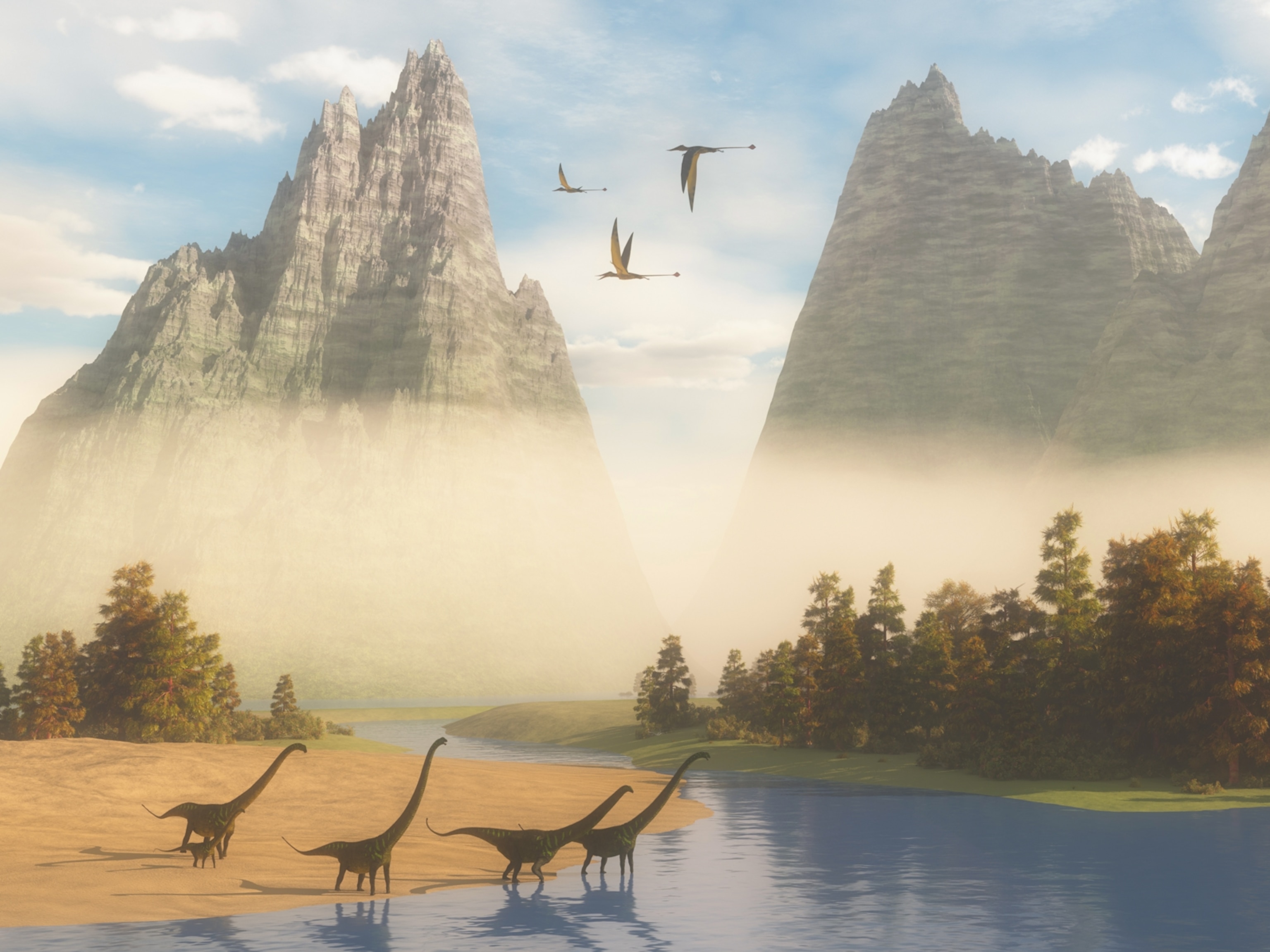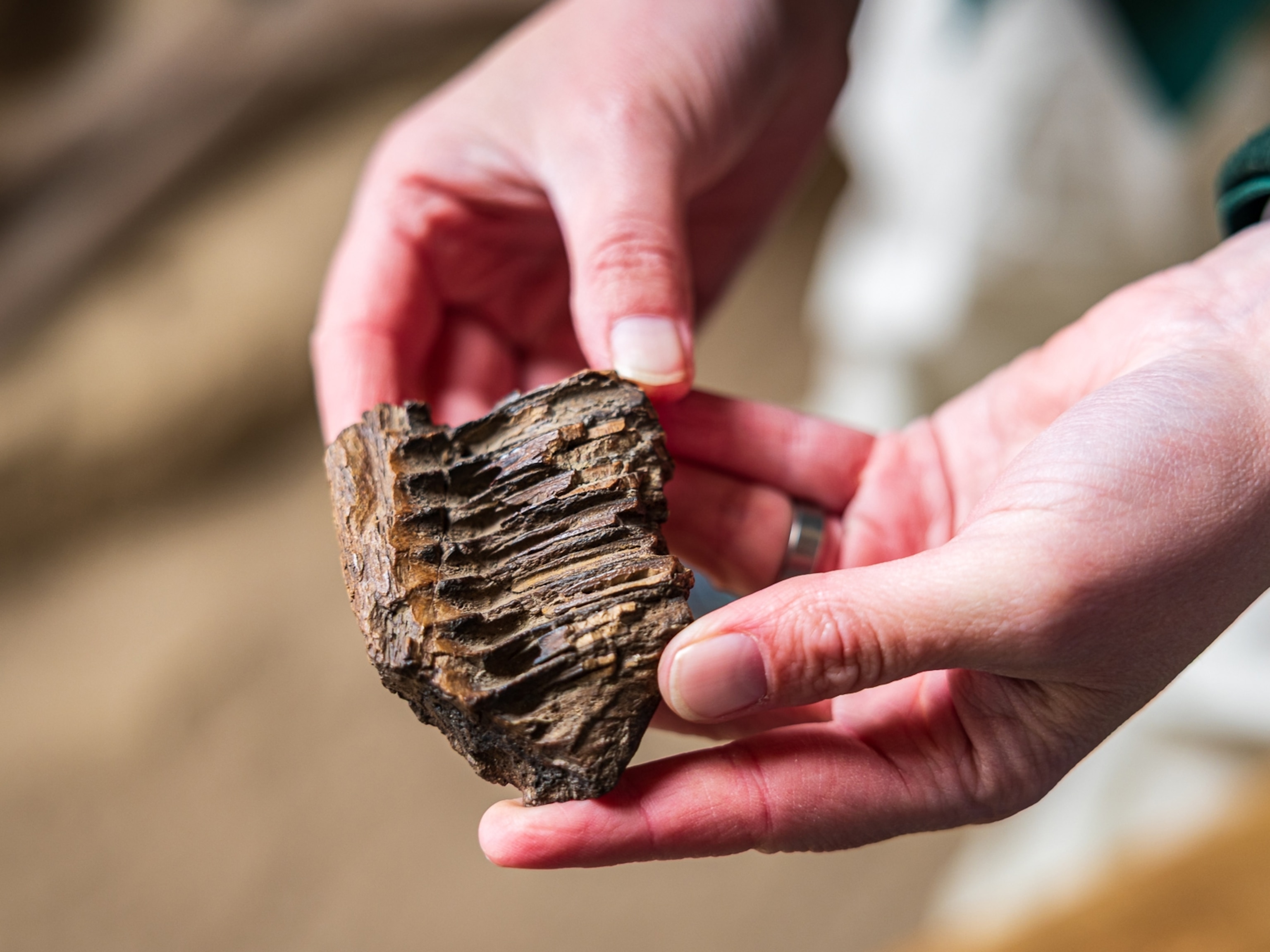
Liaoning Province—China's Extraordinary Fossil Site
Read a National Geographic magazine article about dinosaur fossil finds in Liaoning Province, China, and get information, facts, and more.
Guarding long-buried treasure, a monitor at a dig site looks out for thieves who illegally remove fossils for sale to collectors. He sleeps in the one-room shack on the rim, keeping an ear cocked for voices in the dark.
In Liaoning Province, located in the rolling farm country of northeastern China, peasant farmers make only a few hundred dollars a year. They know they can make many times that amount by selling just one prized fossil on the black market. Even if recovered, illegally removed fossils have diminished scientific value, says Xu Xing of the Institute of Vertebrate Paleontology and Paleoanthropology (IVPP) in Beijing: "If it isn't collected right, a fossil loses its context—the layer it was found in and its relationship to other fossils."
Xu, also a postdoctoral fellow at the American Museum of Natural History in New York, waxes enthusiastic about what has become one of Earth's most celebrated fossil beds. Discoveries there are casting light on life during the Mesozoic, specifically 130 million to 110 million years ago—a time distinguished by the diversification of dinosaurs, mammals, birds, and flowering plants.
"Liaoning opens a window on the late Mesozoic that is more complete and more in-depth than anywhere else on Earth," Xu asserts. The reason is the diversity and great abundance of terrestrial plants and animals and their fossilization. At most sites only bone can be found. At Liaoning the fine particles of ash and mud that covered animals preserved soft body parts and prevented decomposition by sealing off oxygen.
Some scientists call Liaoning a Mesozoic Pompeii, evoking the ancient Roman city where humans were entombed by the eruption of Mount Vesuvius. But in its own way Liaoning is even more remarkable. Repeated volcanic eruptions created a layer cake of fossil beds spanning millions of years. So far, more than 60 species of plants, nearly 90 species of vertebrates, and about 300 species of invertebrates have been identified. Paleontologists marveled at dinosaur fossils with stomach contents identifiable as the bones of lizards and mammals, and at bird fossils containing plant seeds.
Liaoning is situated within a vast region whose primeval flora and fauna are referred to as the Jehol biota. The area was characterized by a warm climate and numerous lakes. These conditions provided a fruitful environment for plants and animals to differentiate and nourish. So many individual fossils have been found that scientists are able to study population dynamics, succession within communities of interacting species, and even predator-prey relationships.
"The site preserved not just bones but often whole skeletons," says paleontologist Hans-Dieter Sues of the Smithsonian Institution, "and some birds were preserved so well you can distinguish between male and female. Liaoning is unique."
During the 1990s Liaoning jumped from the pages of scholarly journals onto front pages everywhere through a series of spectacular discoveries of archaic birds and—more intriguingly—dinosaurs with feathers. These fossils bolstered the once controversial but now widely endorsed theory that modern-day birds descended from dinosaurs. They also provide much new evidence in the ongoing debate about how flight originated.
Fossils are being uncovered faster than paleontologists can describe the specimens and spread the new knowledge through scientific papers. And Liaoning promises to provide fresh discoveries for many years to come.





